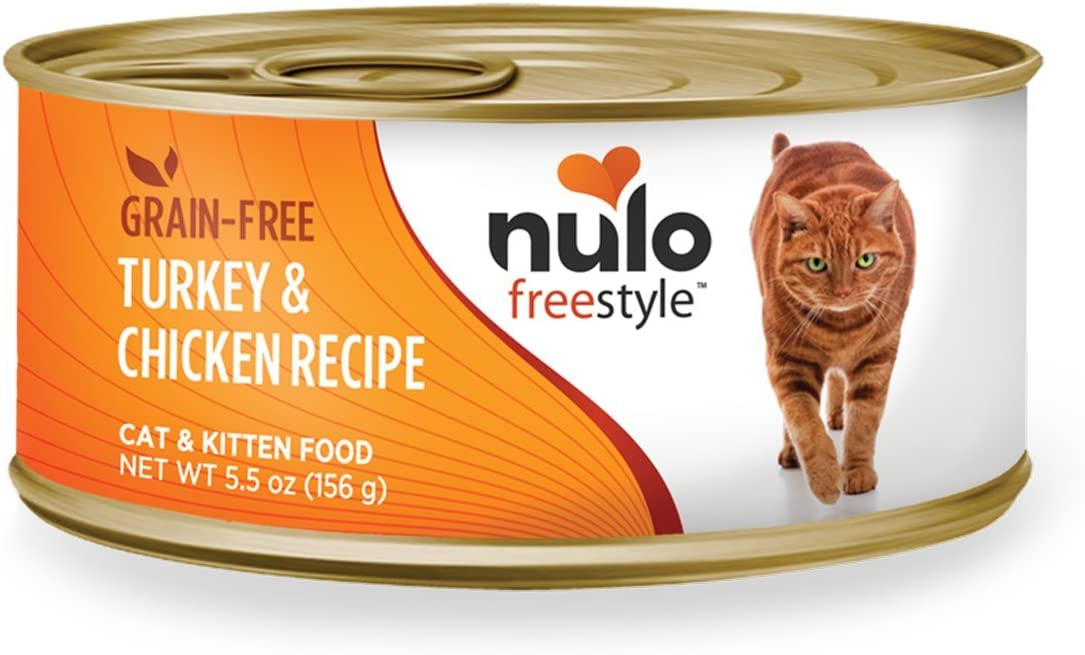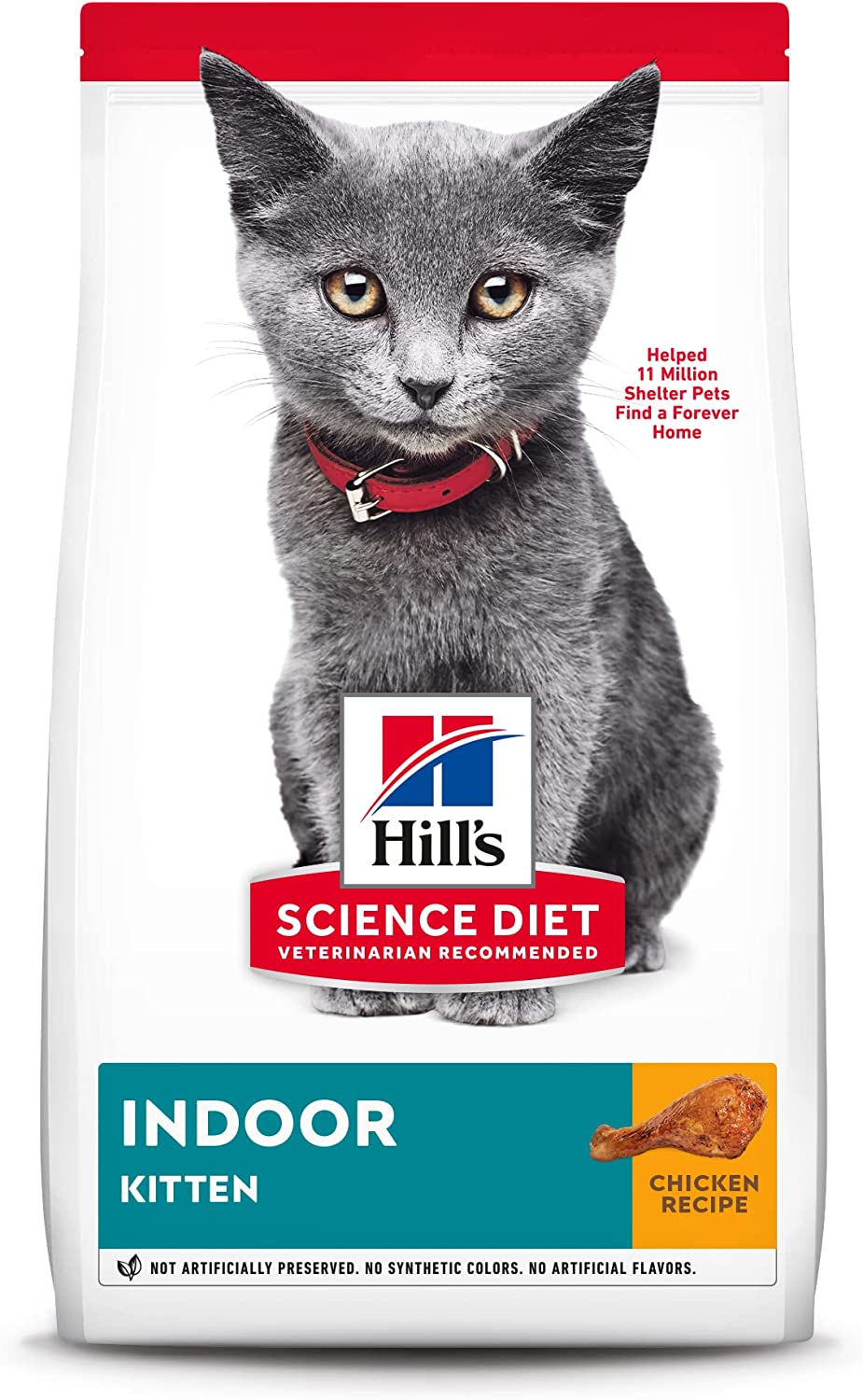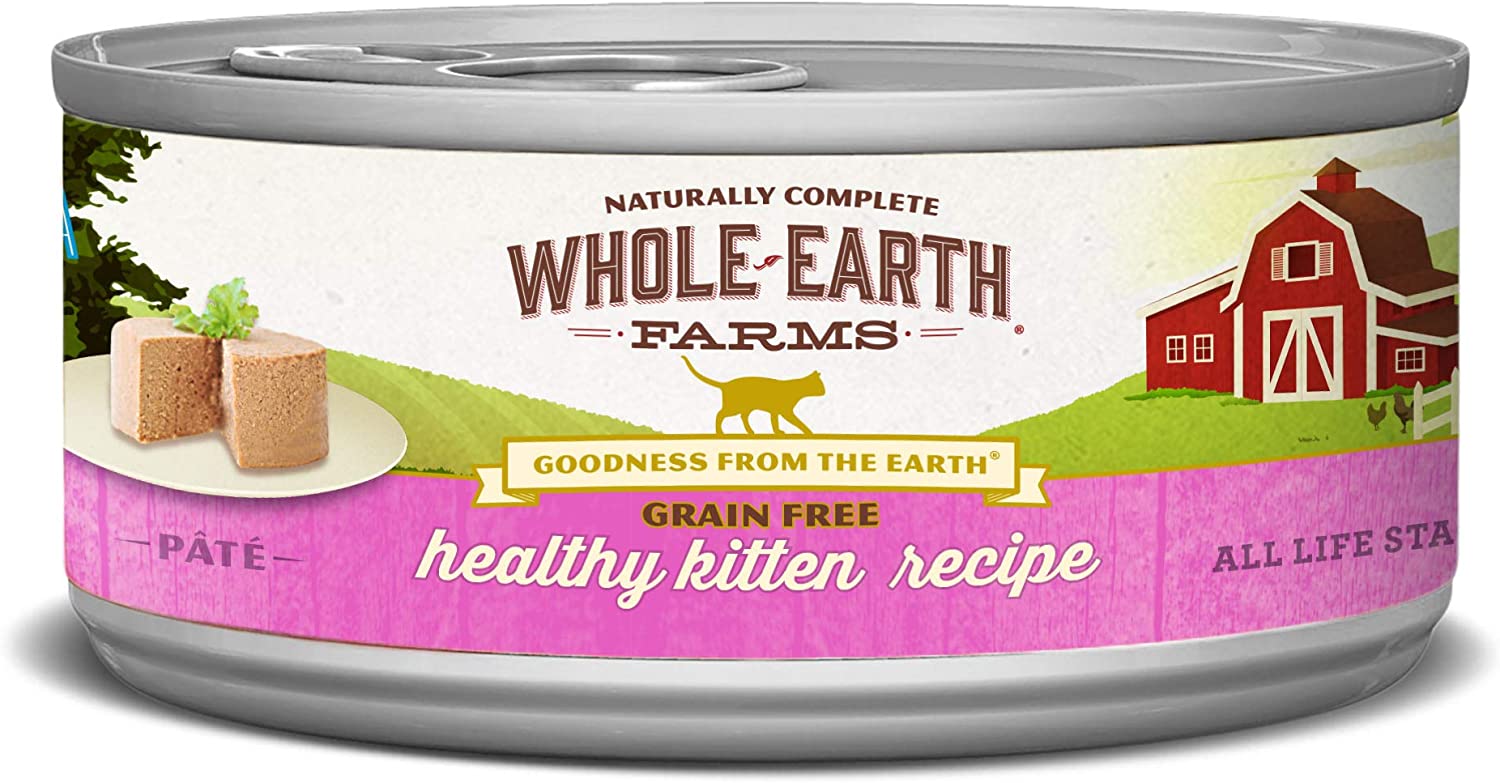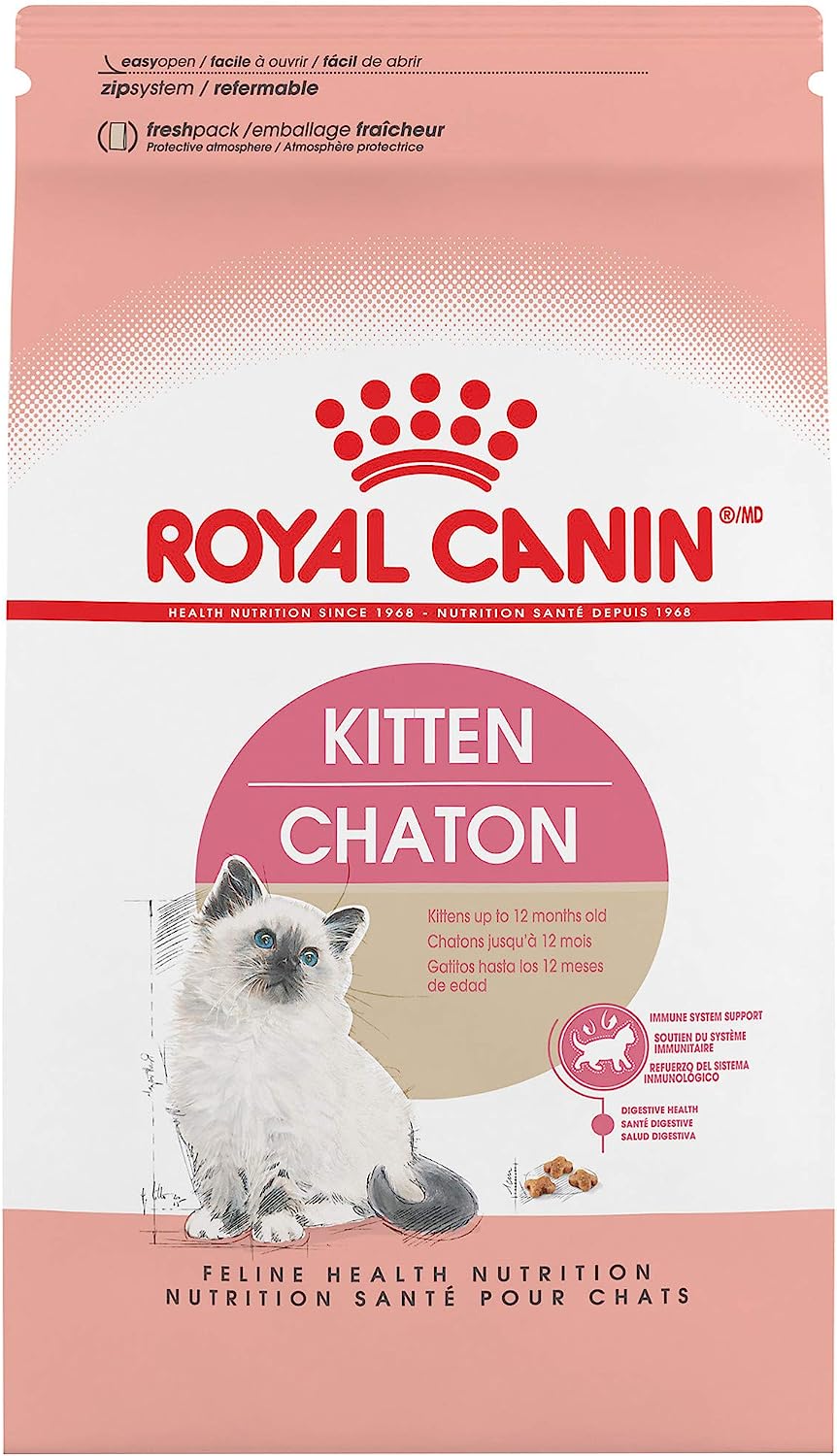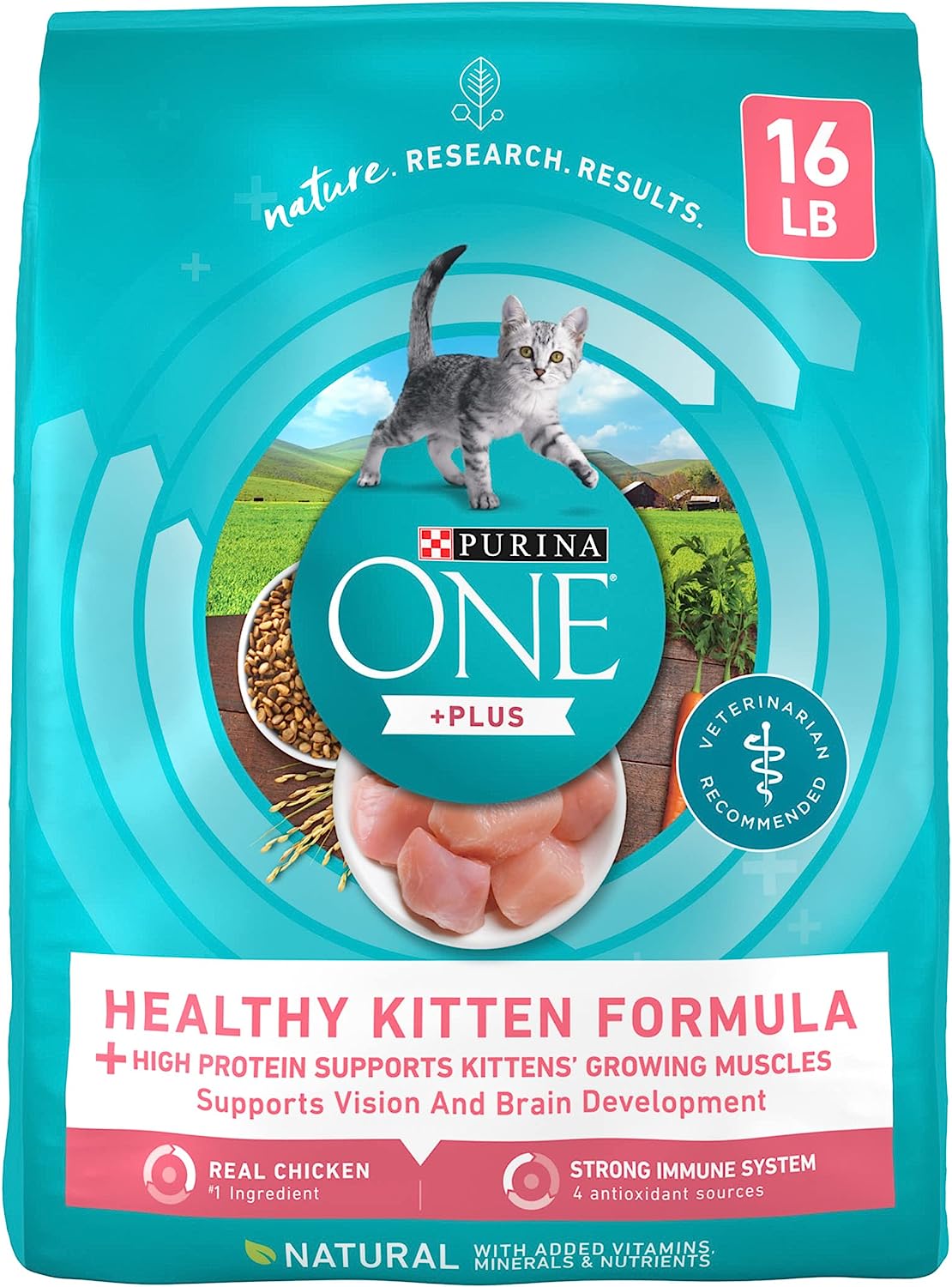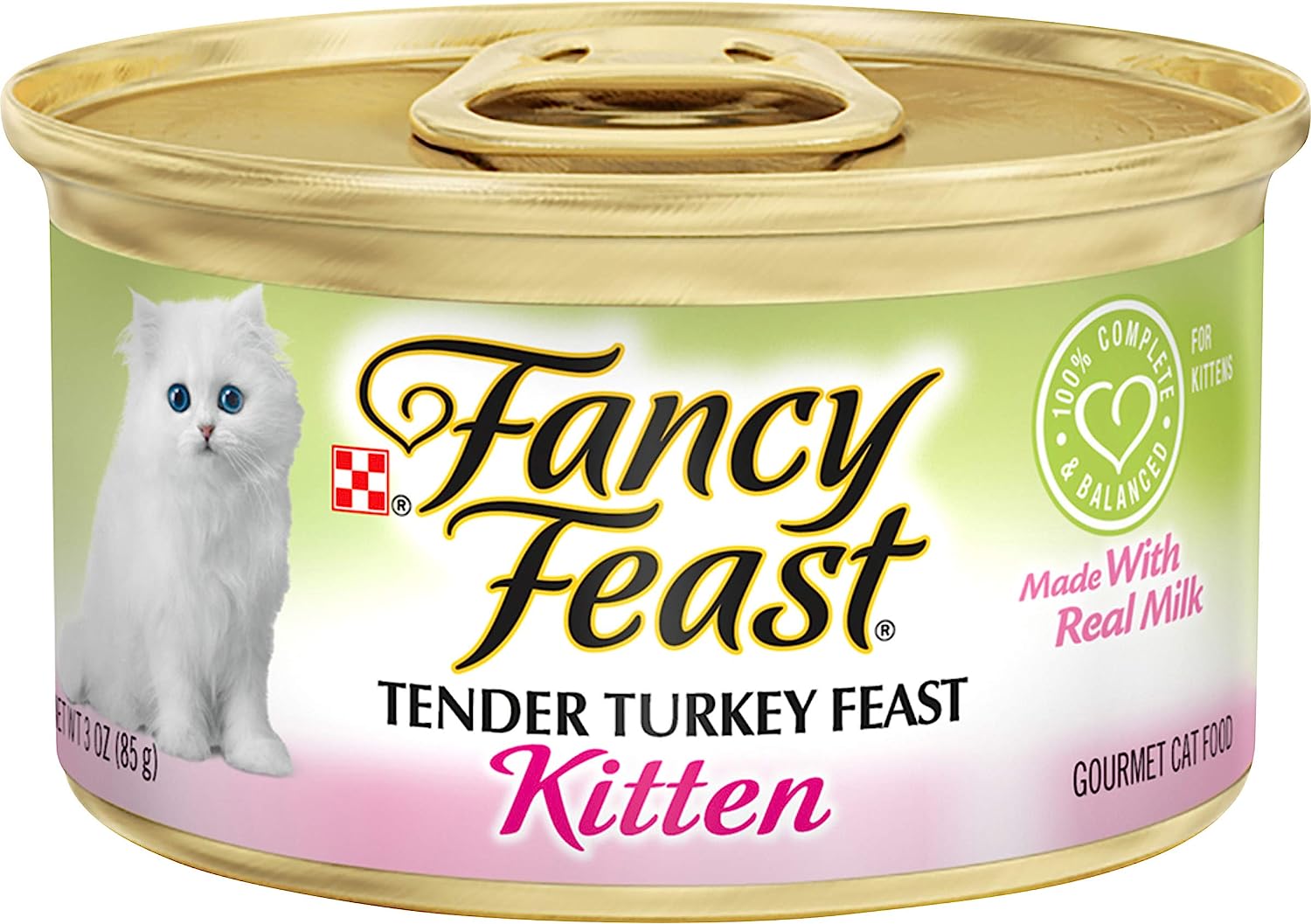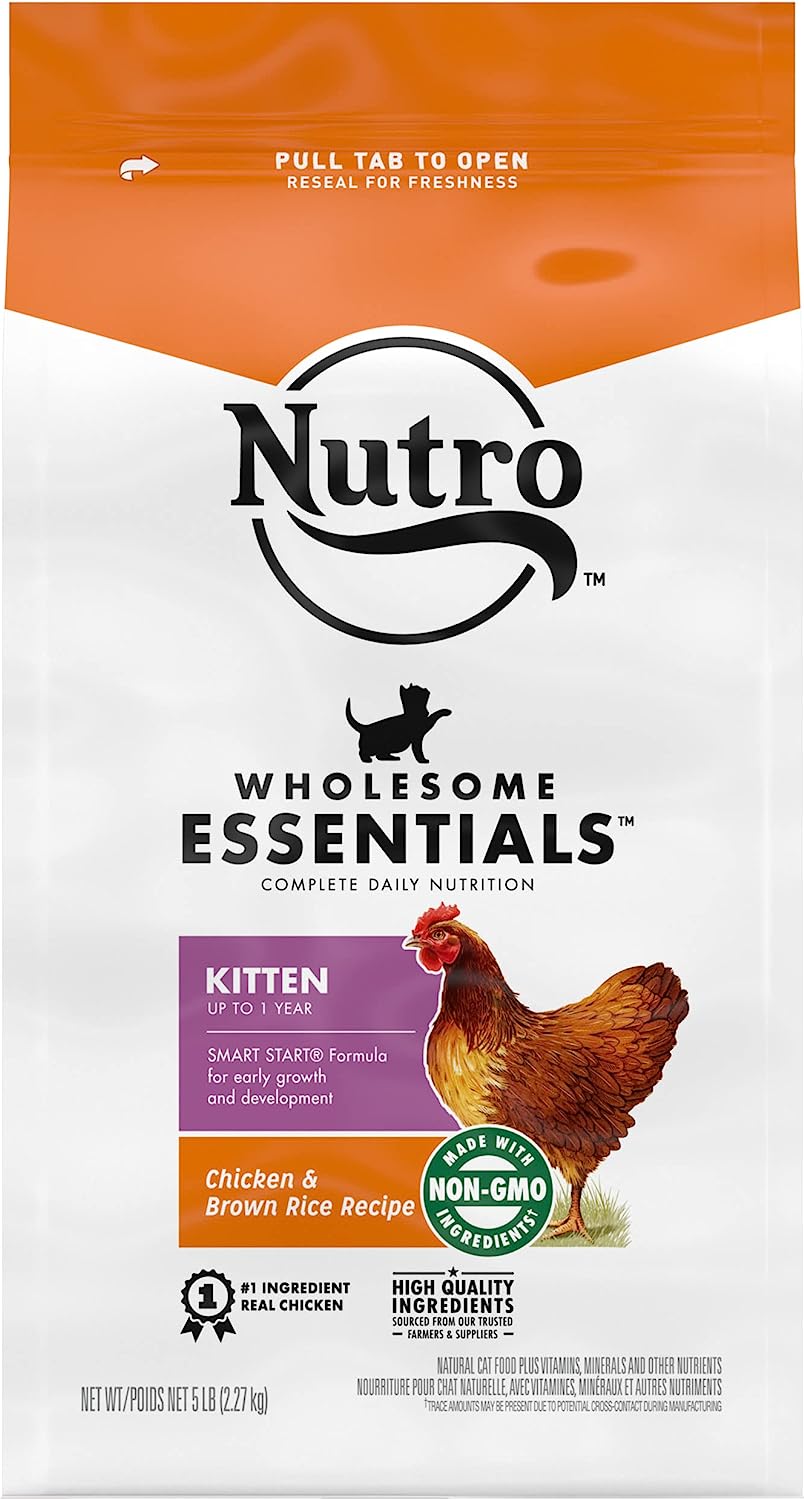iHeartCats is reader-supported. When you buy via links on our site, we may earn an affiliate commission at no extra cost to you.
Are you a proud new kitten parent, eager to provide your furry bundle of joy with the best kitten food out there? Look no further! In this article, we delve into the world of feline gastronomy to explore the top choices for kitten food.
As kittens have unique nutritional needs for their growth and development, selecting the right food is crucial for their overall health. We’ll discuss a range of options, from premium brands to favorite flavors, ensuring you have all the information needed to make an informed decision and keep your kitten purring with delight. Prepare to discover the ultimate guide to nourishing your adorable little ball of fluff!
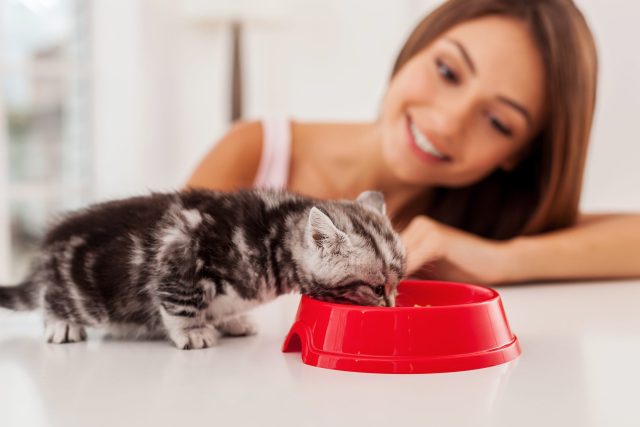
Buyer’s Guide: What to Consider When Choosing the Best Kitten Food
When buying kitten food for your little one, keep these factors in mind:
Nutritional Composition
Ensure a food follows AAFCO standards to properly balance proteins, fats, and carbohydrates and support growth and energy. Look for essential nutrients like vitamins (A, D, E, and B-complex) and minerals (calcium, phosphorus) for overall health. Kitten food should also include adequate levels of DHA (docosahexaenoic acid) for brain and vision development.
Quality of Ingredients
Check for high-quality protein sources (e.g., real meat like chicken, turkey, or fish) as the primary ingredient. Avoid foods with excessive fillers, by-products, artificial colors, flavors, or preservatives. Consider organic or natural options that prioritize wholesome ingredients.
Age Appropriateness
Select foods specifically formulated for kittens to meet their unique nutritional needs. Kittens require more calories and nutrients than adult cats for growth, so ensure the food is designed for their life stage. Remember to consult your veterinarian for personalized recommendations based on your kitten’s specific health needs.
Individual Dietary Needs and Sensitivities
Choose a limited-ingredient or hypoallergenic formula if your kitten has known allergies or sensitivities. Consider special diets for specific conditions like grain-free, gluten-free, or sensitive stomach formulations.
Brand Reputation and Reviews
Research and choose reputable brands known for their quality standards and rigorous testing. Read customer reviews and ratings to gain insights into the experiences of other kitten owners.
Price and Budget
Determine a budget range that suits your financial means while prioritizing quality nutrition. Compare prices across different brands and sizes to find the best value for your money.
The 9 Best Kitten Foods To Tickle Your Tiny Feline’s Fancy
1- Nulo Cat Freestyle Pate Canned Cat & Kitten Food
An excellent choice for cats of all ages, especially for older kittens transitioning to adult food, Nulo Cat Freestyle Pate offers high-protein and grain-free nutrition. It is packed with real meat and vegetables, ensuring your pet receives all essential nutrients. While a bit pricey, the quality ingredients justify the cost.
Pros
- First 3-4 ingredients are proteins
- Uses low glycemic sources like pumpkin and carrots
- Multiple can sizes and amounts available
- Manufactured in the USA
Cons
- Pricier than many other cat food options
2- Hill’s Science Diet Dry Cat Food, Kitten, Indoor, Chicken Recipe
Hill’s Science Diet Dry Cat Food, Kitten, Indoor, Chicken Recipe is specifically tailored to meet the nutritional needs of indoor kittens. It offers balanced nutrients from high-quality chicken and supports a robust immune system. However, it’s on the pricier side and may not suit kittens with specific dietary needs.
Pros
- Nutritionally complete and balanced
- Supports immune system health
- Promotes cognitive development
Cons
- More expensive than average cat food
3- Whole Earth Farms Grain Free Wet Cat Food Kitten
Whole Earth Farms Grain Free Wet Cat Food offers a budget-friendly, grain-free option for kittens. Made with quality proteins and fresh vegetables, it’s nutritionally balanced and tasty. Though the texture may not please all, the overall value is undeniable.
Pros
- Budget-friendly
- Grain-free formulation
- High-quality proteins and fresh vegetables
- Texture may not appeal to all kittens
- Excellent overall value
Cons
- On the expensive side
4- Blue Buffalo Cat Food for Kittens
Blue Buffalo provides a wholesome diet for growing kittens with real meat as the first ingredient. Enhanced with DHA for cognitive development and calcium for strong bones, this formula caters to kittens’ unique needs. Their cold form process also helps to preserve potency. Some kittens may find the kibble size a bit large.
Pros
- Highly rated by cat parents
- Kittens love the flavor
- Grain-free
- Includes ARA and taurine for healthy kitten growth
Cons
- May cause stomach upset in some kittens
5- Royal Canin Feline Health Nutrition Kitten Dry Cat Food
Royal Canin’s kitten formula excels with an easily digestible recipe supporting growth and immune health. The kibble’s unique shape encourages chewing, aiding oral hygiene. Although premium-priced, its targeted nutrition makes it worth the cost.
Pros
- Formulated for the nutritional needs of growing kittens
- Yummy flavor for kittens
- Easy to chew
- One of the best-rated kitten foods available
Cons
- Not suitable for kittens with specific dietary restrictions or allergies
- Transition from mother’s milk or other kitten food may initially cause digestive upset
6- Purina ONE High Protein, Natural Dry Kitten Food
Purina ONE Kitten Food offers a high-protein, natural diet that boosts overall kitten health. Its formula contains DHA for vision and brain development. Despite its grain content, which may not suit all kittens, it offers a good value for the price.
Pros
- Thousands of high ratings
- Cats love the flavor
- Long trusted name in the cat food market
- Choice of flavors
- Multiple bag size options
Cons
- None, a kitten favorite
7- Instinct Kitten Grain-Free Pate Real Chicken Recipe Natural Wet Canned Cat Food
This grain-free kitten food by Instinct, featuring real chicken, delivers high-quality protein for growth. It includes natural DHA for brain and eye development. Some may find the smell strong, but the quality nutrition makes it a winner.
Pros
- Real meat, poultry, and fish
- No grain, corn, wheat, soy, potato, or carrageenan
- Free of artificial colors or preservatives
- Smooth pate style
Cons
- On the expensive side
- Picky kittens may not like the flavor
8- Purina Fancy Feast Pate Wet Kitten Food
Purina Fancy Feast Wet Kitten Food offers a smooth, rich pate that kittens adore. It’s nutritionally balanced to support growth with real poultry or seafood. Though it has artificial flavors, its palatability, and affordability make it a good choice.
Pros
- Cats and cat parents love and trust the Fancy Feast brand
- Affordable pricing
- Available in several flavors
- Variety boxes available
Cons
- Larger can options would be nice
- Not as clean as other food options
9- NUTRO WHOLESOME ESSENTIALS Natural Dry Cat Food, Kitten Chicken & Brown Rice Recipe Cat Kibble
Nutro Wholesome Essentials offers a natural, balanced diet for kittens with chicken and brown rice. It’s fortified with necessary nutrients and Omega-3 for healthy growth. While it contains grains, it’s free of artificial colors and preservatives.
Pros
- Non-GMO ingredients
- Rich in omega-3 fatty acids
- No corn, wheat, or soy protein
- Free of artificial preservatives, flavors, or colors
- Affordably priced dry kitten food
Cons
- Limited flavor options
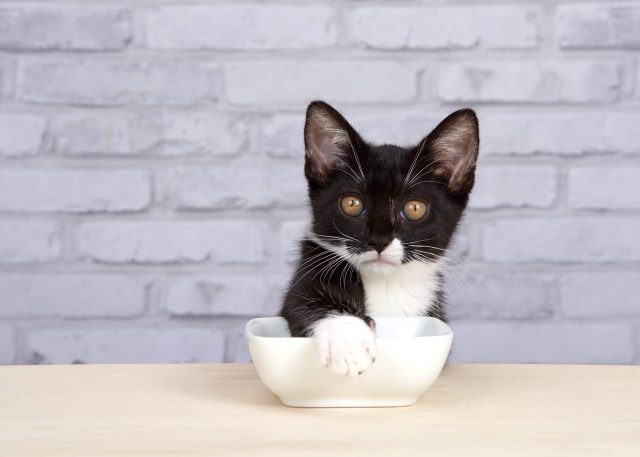
FAQs About the Best Kitten Food
Should I feed my kitten wet or dry food?
Whether to feed your kitten wet or dry food depends on various factors. Both options have their advantages, and many cat parents choose a combination of wet and dry.
Here are some considerations to help you make an informed decision:
- Nutritional Content: Wet food often contains higher moisture content, which can help keep kittens well-hydrated, especially if they don’t drink enough water. It can also be beneficial for kittens prone to urinary tract issues. On the other hand, dry food may have a higher concentration of nutrients and calories, which can be advantageous for kittens with high energy needs.
- Dental Health: Dry food can have a slight advantage in promoting dental health, as the crunchy kibbles can help remove plaque and tartar buildup. However, regular dental care, such as brushing your kitten’s teeth, is still necessary regardless of the food choice.
- Palatability and Variety: Wet food is often more palatable to kittens due to its appealing texture and strong aromas. It’s helpful for kittens with a finicky appetite or transitioning from mother’s milk. A mix of wet and dry can provide variety and cater to your kitten’s preferences.
- Convenience and Cost: Dry food tends to be more convenient as it can be left out for free feeding without spoilage concerns. It also tends to be more cost-effective than wet food, which typically comes in smaller portions and may require refrigeration.
- Specific Health Needs: Some kittens may have specific health conditions or dietary requirements that necessitate one type of food.
Ultimately, the decision to feed your kitten wet or dry food depends on your kitten’s health, preferences, and your lifestyle. Consider incorporating both types to provide a well-rounded diet. It’s always recommended to consult with your veterinarian for personalized advice tailored to your kitten’s specific needs.
How much and how often should I feed my kitten?
Feeding your kitten the appropriate amount and frequency is crucial for healthy growth and development. Here are general guidelines to consider, but it’s important to remember that individual kittens may have unique needs, so consulting with your veterinarian is recommended for personalized advice:
- Age: Kittens have different nutritional requirements at various stages of growth. Like babies, younger kittens (up to 8 weeks old) typically need to be fed more frequently, around 4 to 6 times a day. As they grow older, the frequency of feedings can gradually be reduced.
- Portion Sizes: Follow the feeding recommendations provided on the kitten food packaging as a starting point. These guidelines usually suggest the appropriate amount of food based on the weight and age of your kitten. Adjust the portion size as needed to maintain a healthy weight and body condition. Monitor your kitten’s weight regularly and consult your veterinarian for necessary adjustments.
- Free-Feeding vs. Scheduled Meals: Free-feeding involves leaving food out all day for kittens to eat as they please. This method works well with dry food but can lead to overeating. Scheduled meals involve offering specific portions at designated meal times. It provides better portion control and allows you to monitor your kitten’s eating habits more closely.
- Water Availability: Always provide fresh, clean water for your kitten. Ensure it is easily accessible, especially when feeding dry food, as it helps prevent dehydration.
RELATED: The 8 Best Cat Water Fountains To Encourage Healthy Hydration
Remember, these guidelines are general recommendations, and your kitten’s specific needs may vary. Breed, activity level, metabolism, and overall health should be considered. Regular veterinary check-ups can help monitor your kitten’s growth and provide guidance on their dietary needs.
Should I consult my veterinarian before selecting a kitten food?
It’s highly advisable to consult your veterinarian before selecting a kitten food. Veterinarians possess the knowledge and expertise to assess your kitten’s specific nutritional needs based on age, breed, and health conditions. They can provide personalized recommendations and guidance on selecting the right food to support your kitten’s growth and development.
Veterinarians stay informed about the latest research, ingredient quality, and reputable brands, ensuring you make an informed decision. Regular veterinary check-ups also allow for monitoring your kitten’s health and making any necessary adjustments to the diet. Consulting your veterinarian ensures your kitten receives the best nutrition for their overall well-being.
Are there specific dietary requirements or restrictions for kittens?
Yes, kittens have specific dietary requirements to support their growth and development. Here are some important considerations:
- Higher Protein Content: Kittens need a higher protein intake than adult cats to support muscle growth. Look for kitten foods that provide a higher percentage of quality animal-based proteins.
- Adequate Fat and Calorie Content: Kittens require more calories and fats for energy compared to adult cats. Ensure their food provides an appropriate balance of fats to support their active lifestyle and promote healthy weight gain.
- Essential Nutrients: Kittens need specific nutrients like DHA (docosahexaenoic acid) for brain and vision development. Look for kitten foods that contain essential nutrients in proper amounts.
- Calcium and Phosphorus Levels: These minerals are crucial for developing strong bones and teeth in kittens.
- Avoiding Allergens and Irritants: Some kittens may have dietary sensitivities or allergies to certain ingredients. If your kitten shows signs of food allergies or intolerances (such as gastrointestinal upset or skin issues), consult your veterinarian for guidance on selecting appropriate hypoallergenic or limited-ingredient diets.
Remember, each kitten is unique, and their specific dietary requirements may vary.
Can I feed my kitten homemade food?
Feeding your kitten homemade food is possible, but it requires careful consideration and guidance from a veterinarian or veterinary nutritionist. Homemade diets should provide balanced nutrition, including appropriate amounts of proteins, fats, carbohydrates, vitamins, and minerals. It’s essential to use high-quality animal-based protein sources, ensure proper nutrient supplementation, and maintain consistency in the diet.
Homemade food preparation requires time, effort, and adherence to food safety practices. Regular veterinary oversight is crucial to monitor your kitten’s health and growth and make necessary adjustments to the homemade diet. Consulting with a professional ensures that the homemade food meets your kitten’s nutritional needs for optimal health and well-being.
When should I transition my kitten from kitten food to adult cat food?
The timing of transitioning your kitten from kitten food to adult cat food typically occurs around their first birthday. However, this can vary depending on breed, size, and individual development. Signs that may indicate readiness for adult cat food include reaching their adult weight, having a fully developed set of adult teeth, and displaying a decreased interest in kitten food. Gradually introduce the adult cat food over the course of a week or two, mixing it with the kitten food to ensure a smooth transition and avoid digestive upset.
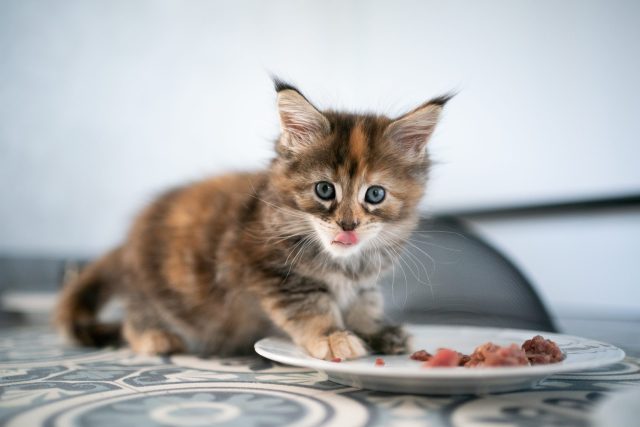
In conclusion, selecting the best kitten food is crucial for promoting the health and well-being of your little kitty. Consider factors such as the quality of ingredients, nutritional content, suitability for your kitten’s specific needs, and reputable brands. Remember to consult your veterinarian for personalized advice tailored to your kitten’s requirements. With careful consideration and informed decision-making, you can provide your kitten with a high-quality diet that supports their growth, development, and overall health, setting them on a path toward a happy and healthy life.
[templatera id= “3493224”]

